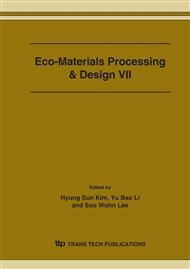p.1014
p.1018
p.1022
p.1026
p.1030
p.1038
p.1042
p.1046
p.1050
Fabrication of Ceramic Microchannels with Tailored Pores
Abstract:
This paper reports fabrication of high temperature stable, chemically inert SiC and SiCN monolithic porous microchannels by micromolding in capillaries (MIMIC) method. These types of high surface area materials hold tremendous untapped potential in micro-total analysis systems, micro-reaction technology and clean energy systems. Owing to their excellent durability under harsh conditions, SiC and SiCN micro-components are imperative in fields like fuel cells, for hydrogen generation and as environmental sensors. The report also describes the use of template particles of different size and type with diameter of ranging from 0.5 to 1.5 µm to prepare porous, high temperature stable ceramic microchannels. In the present work, ceramic porous channels have been fabricated via polymer to ceramic conversion route by using commercially available polymer precursors.
Info:
Periodical:
Pages:
1030-1037
Citation:
Online since:
March 2006
Authors:
Price:
Сopyright:
© 2006 Trans Tech Publications Ltd. All Rights Reserved
Share:
Citation:


